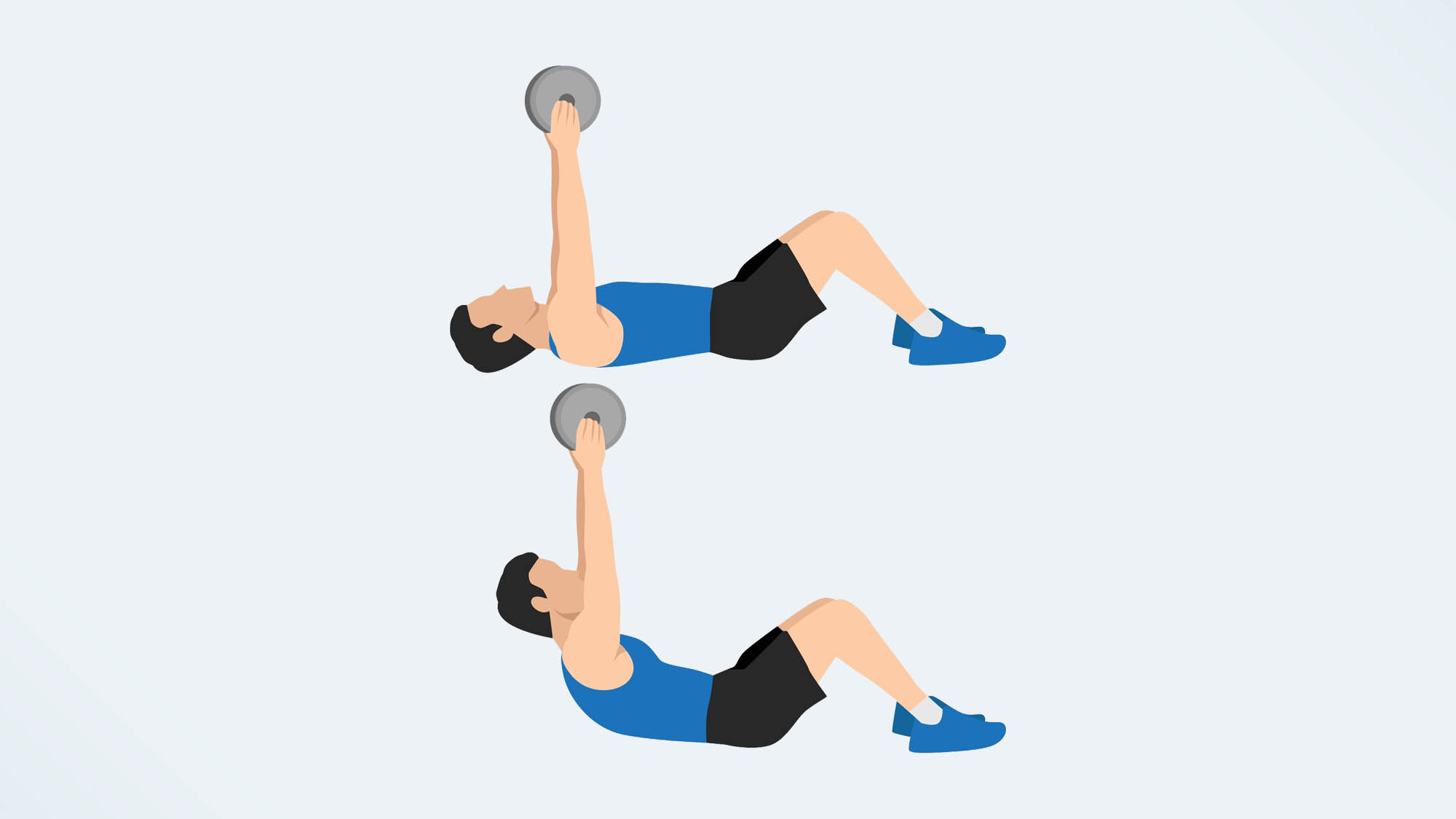I did weighted sit-ups every day for a week — here’s what happened
Core work getting boring? Amp up the difficulty by adding weights to this classic exercise

Love them or hate them, abdominal exercises are essential for building and maintaining a strong and healthy physique. While going for a bench press PR may be a major inspiration for hitting the gym, it’s the stabilizing and supportive muscles of our core (the rectus abdominis, transverse abdominis, and internal and external obliques) that enable us to lift heavier, run faster, or jump higher.
But core work can get a bit, well, boring. For the Pilates and Yoga aficionados, working the abdominal muscles in new and interesting ways comes relatively easy. However if you’re more inclined to go for a run, join a HIIT class, or pick up a barbell, forcing yourself to get down onto the mat can be a challenge.
Thanks to some genetic lower back issues that have been a (literal) thorn in my side for years, I’ve had to focus on strengthening my core lately. And fortunately, I’ve reaped the benefits — I’ve been able to increase the mileage on my runs and the pounds on my squat without any back pain derailing my progress.
All this abdominal work has resulted in an obviously stronger core, but now my daily set of sit ups isn’t torching my abs in the ways it did before (and, as you might have guessed, it’s boring me to tears). So I decided to take my core work up a notch by performing weighted sit ups everyday for a full week. It should be said that what works for me may not be the right choice for you — if you’re new to exercising, start with the basics (like a modified plank or a standard crunch) before progressing to this kind of movement.
How to do a weighted sit up
For this exercise, you'll need a weight of some sort. This could be a medicine ball, one of the best adjustable dumbbells, a kettlebell, or a weight plate. Let’s review the correct form for a weighted sit-up:

- Lie on the floor with a neutral spine, knees slightly bent and heels on the floor. Hold a light to moderately heavy weight in your hands, resting at chest level.
- Take a deep breath in, and as you exhale contract the muscles in your abdomen and lift your head, shoulders, and torso off the floor, bringing yourself to a seated position.
- Slowly lower yourself back to the starting position with control.
- Repeat for a set of 8-12 repetitions.
Even though it’s a classic exercise, the sit-up requires a relatively strong core to perform correctly on its own — even without the extra weight. Don’t be afraid to practice a standard sit-up first to ensure good form. If you need further modifications, recruit a friend to hold your feet as you work through your reps. Or, start with a crunch before progressing to a sit-up. Here's how to do a sit-up with perfect form, and why it matters.
I did weighted sit-ups every day for a week — here’s what happened
Excited to add something new to my usual core routine, I performed weighted sit-ups every day for a full week. I used a 15-pound kettlebell and aimed for three sets of 10 repetitions. Here’s what happened:
Sign up to get the BEST of Tom's Guide direct to your inbox.
Get instant access to breaking news, the hottest reviews, great deals and helpful tips.
My abs were super sore
Admittedly, I didn’t think that adding weighted sit-ups into my workouts would yield any noticeable fatigue — as I mentioned, I do a lot of ab work already and have a relatively strong core. Boy, was I totally wrong! By the end of the third set on the first day, my abs were waving a white flag. I barely made it to the last rep with good form.
Predictably, the next day I was incredibly sore. In fact, I had to trade in my 15-pound kettlebell for a 10-pound plate and reduce my three sets of 10 to one set of 10. And even that was painful.
I had to pay close attention to my form
After the shock of the first two days had passed, I was able to move back to my 15 pound kettlebell. Once I got a little more acclimated to the movement though, I found it was very easy to let momentum take over and not contract the muscles of my core fully.
This is an easy compensation to make, especially if you’re fatigued. But slowing down and coming to a full stop at the end of the repetition allowed me to reset and refocus on using the correct muscles for the job.
My core felt noticeably stronger
I really started to feel the results by the middle of the week. My usual planks and birddogs felt like a total breeze. Bicycle crunches felt as easy as riding an actual bike — downhill. Even the weighted sit ups themselves started to feel only slightly challenging.
I considered using a heavier weight for my remaining days, but decided against it. Instead, I swapped the 15 pound kettlebell for a 15 pound dumbbell just to keep things interesting.
Squats were easier
Surprisingly, a week’s worth of weighted sit ups made my usual lower body routine feel more like a warm up than a working set. Goblet squats, usually the bane of my existence, were practically easy. I was even able to add five extra pounds and go for another set, which I’m very surprised to report.
I attribute a lot of this success to the extra stabilization my abdominals could now provide — goblet squats always feel a bit precarious due to my lower back issues, but after a week of heavy core work my entire posterior chain felt pretty rock solid.
More from Tom's Guide
Jennifer Rizzuto is a freelance writer and certified personal trainer based in Long Island, NY. She covers various fitness-related topics and reviews for Tom's Guide. She also writes sketch comedy and short films, and performs frequently as an actor, singer, and improviser. When she's not writing, working out, or performing, you'll find her trying to convince her husband to get a dog.

